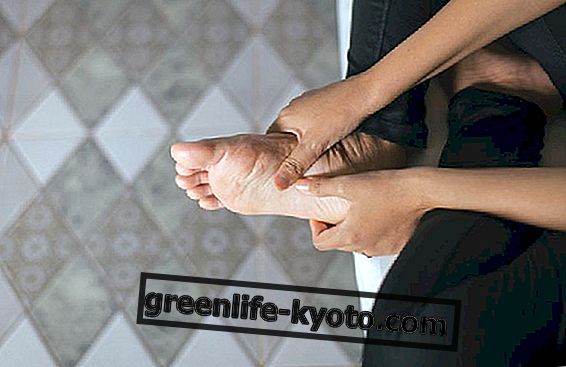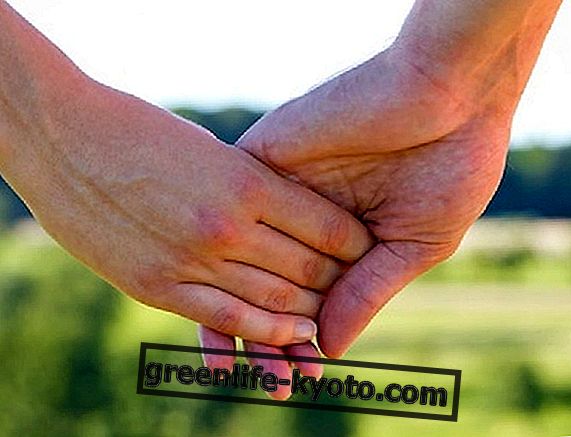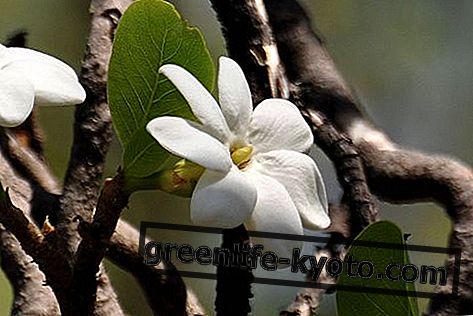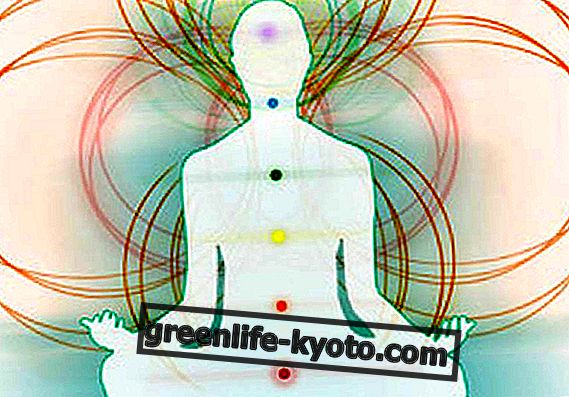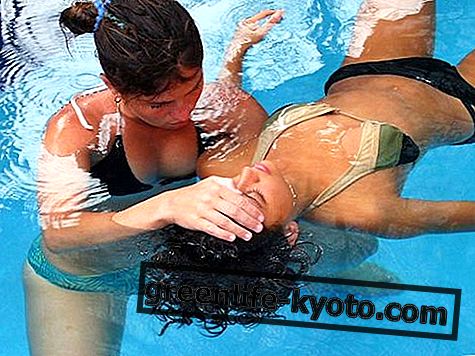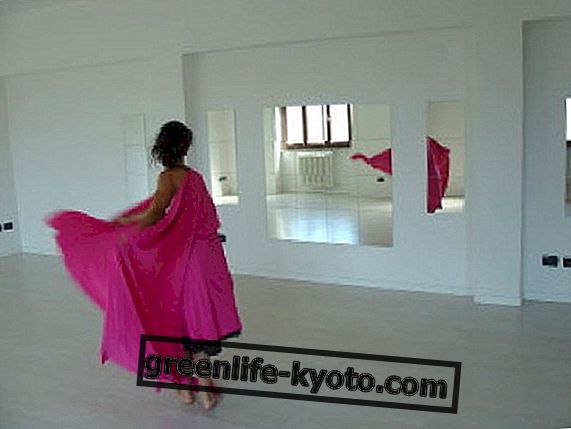
When Elena Maria Fossati and I find ourselves on Skype, behind her, I notice so much beautiful wood. He describes the splendid structure he is building in Brianza, a special place for art therapies and movement. I don't know why but I feel at home, even if at a distance. Start with an uncomfortable question: "If dance is already healing, what is the point of dance therapy?" The question starts from a reflection made with a choreographer friend, Daniela Malusardi.
Recently I also approached African dance and a few questions came up. If it can happen that in a postural one is attentive to the slightest movement, to the point that sometimes the fear itself comes to create blocks, as it is possible that some dances are liberating and care, that when one enters the free motor expression movements are completed yes fast, repeated, energetic, but these do not create problems, indeed, free and unblock? "But because dance is healing in itself, " Daniela replied.
And then, when you have the opportunity to interview those of dance therapy if they know how like Elena Maria Fossati, the question that "arises spontaneously" does not let you miss it. Of course, it's like asking a baker what bread is needed, but Maria Elena listened to me with care and sweetness and her answers were precise and thoughtful.
"It is true that dance is a therapy in itself. As it is true that already in ancient Greece the spectators (active participants, among other things) at the theater were able to experience catharsis. When you dance you take out your world internal: the human being brings out self-expressions through the body, the word, the poetry, the sound, the graphic, pictorial, sculptural production.When our inner world is taken outwards in fact a creative process takes place that is already healing, I do not want to reduce it to the simple "Balla che passe", but in a certain sense it is so, the expression conveys wellbeing.This sensation is at the level of blood circulation, heart rate, motor coordination, musculature, of the whole unit we incorporate. This type of work is also therapeutic in the broad sense because it is a creative-expressive movement. Dance therapy is based on these powers, on the possibility that the dance offers. it the role of the professional is to draw awareness from this expression . The professional helps his student, client or patient to structure this creative process that would remain an end in itself, to expression. To answer you better, dance becomes dance therapy when there is a conductor who channels this process to harmonize it, use it as a personal resource. "
He then told me about his very interesting and nutritious path to listen to him.
"My mom always told me that I have been on the move since the belly, in short, the movement is my privileged channel. I have always done competitive sport in athletics and then volleyball; I have never done professional dance before, my parents would have liked and I did everything not to please them. At 16 I started practicing martial arts and came into contact with forms, with movement as reflection and meditation according to restructuring and motor perception. I am enrolled at the university, I started working in psychiatry with severe patients, in which areas the expression of the body becomes the relational path and in the presence of echolonic disorders the work takes on different values, so to speak, the movement changes when the gesture is not adequate, when the intent of a caress translates, say, into a slap.On my path I found Maria Fux's dance therapy, I met her in one of these sowing in propaedeutics in Milan in 1990, with her I did my training in Milan, from the dance she founded a very creative method and thanks to these half-planes I began to reflect on bodily creativity aimed at understanding the language of these serious mentally retarded . After 3 years with her I met Dr. Vincenzo Puxeddu, Doctor of Medicine, Rehabilitation Specialist with specialization in Dance Therapy (Univ. La Sorbonne Paris), didactic director of the vocational training school in an integrated dance movement. With the approach of Vincenzo Puxeddu, who has a basic training in physiatrics, I integrated the ethno-anthropological approach in my training as a rehabilitator, and all this went to add up the curative part learned with Maria Fux and the baggage deriving from the arts martial arts, which allowed me to approach the body from a side and a more spiritual vision. "
By better dissecting the role of the professional in dance therapy, she states that: "The therapist is the mediator between your movement, your dance and your inner world. Dance is used as a personal resource, not for expressive or artistic purposes, but for achieve other goals, through the mediation of the professional who becomes a "bridge" between the creative process and the inner world.
Then we touch the relationship between dance and evocative power, imagination. He tells me an anecdote that dates back to 2001, when he started working with a group of people more or less all of the third age who, before encountering her, had been followed by a degree in physical education. When Maria Elena started to make them move according to a movement that they themselves could use as a resource, something funny happened: "Of their own free will they proposed to give me photocopies of the exercises they had performed up until then with the other teacher, saying: "You learn them and then you make them do". I do a job that involves the whole creative process, it is typical in the arts therapies where you go to the movement starting from the images . Jung himself did an intense job of research on the potential of creative visualization, on the power of the image that can be created by standing still. When I work with people who have big problems like dementia or problems related to the third age, the reference to the image is constant. arm to perform an exercise does not become an empty repetition, but the reaction to an evocative request could be the one that binds to the idea of taking an apple. "
We started talking about the Apid courses for aspiring therapists and therapists in dance therapy . "The Apid accredited training courses are conceived as the specialization that joins a previous path." I myself used my 4-year training to integrate all my psychiatric rehabilitation backrgound; in the courses the physiology hours are obviously limited for a person who does not have a training already acquired previously. Internally in the didactic commission, we are now reviewing the titles to admit aspiring dance therapists. "He explained to me that much depends on the Law 4/2013, a law that encourages voluntary self-regulation thanks to the certification mechanisms based on the UNI system as referred to in Directive 98/34.
In summary, if professional associations are recognized, they will also be asked to disclose the training that a professional must have in order to register. The Apid courses for aspiring dance therapy teachers indicate parameters for the aspiring dance therapist. Those who want to train must in fact have a bachelor's degree in the humanities, rehabilitation, health, or a second level degree or have done the dance academy. At that point, enrollment can take place in a minimum three-year course, which in fact, including theses, internships, supervision, can become 4. There are schools accredited by the Apid and I, as a member of the Apid board of directors, think it is better for a professional to be registered with the professional association, which guarantees a double caution, both to the consumer and to the professional himself. "At a European level - he explains - there is the EADMT, the European Association Dance Movement Therapy . In England there are very interesting realities and in the same way in France there are incredible training paths also at master's level; in Spain the path of training often fits into the university context. "
From profane, I asked her for some titles on dance therapy and between the mare magnum of the specific literature Maria Elena draws two titles. The first, more technical, is a text that is simply titled "Danzamovimentoterapia", produced by Apid in 2008 ; a text that helps the reader to frame the methodological approaches. The other text is " Authentic Movement", a method of exploring the unconscious through movement, defined by the work of Mary Starks Whitehouse, Janet Adler and Joan Chodorow. In particular, Maria Elena pointed out to us the approach of Chodorow, a professional who has examined the use of movement for psychotherapeutic purposes.
The final question, from a thousand dollars: "Who is Jung for you?"
"If I think of the film, " he says with a smile, "I tell you that he is a man I would not have known ... Joking aside, for us who deal with non-verbal relationships and help relationships using creative tools of all kinds, is a fundamental figure, the backbone of all the paths linked to art therapies.Jung was the one who presented man as being a physical, pictorial, social and spiritual body, through his research he allowed medical science and psychology to to make the Yin meet with the Yang, the East with the West ... A great man who should have lived in this age ... "he thinks for a moment and smpre smiling he corrects himself:" No, thank goodness he lived in its historical moment. Now we have all the open possibilities to enjoy all the fruits it has sown. Despite the therapeutic difficulties that we still have today, we cannot say that we are not reaping the fruits of his work. "
